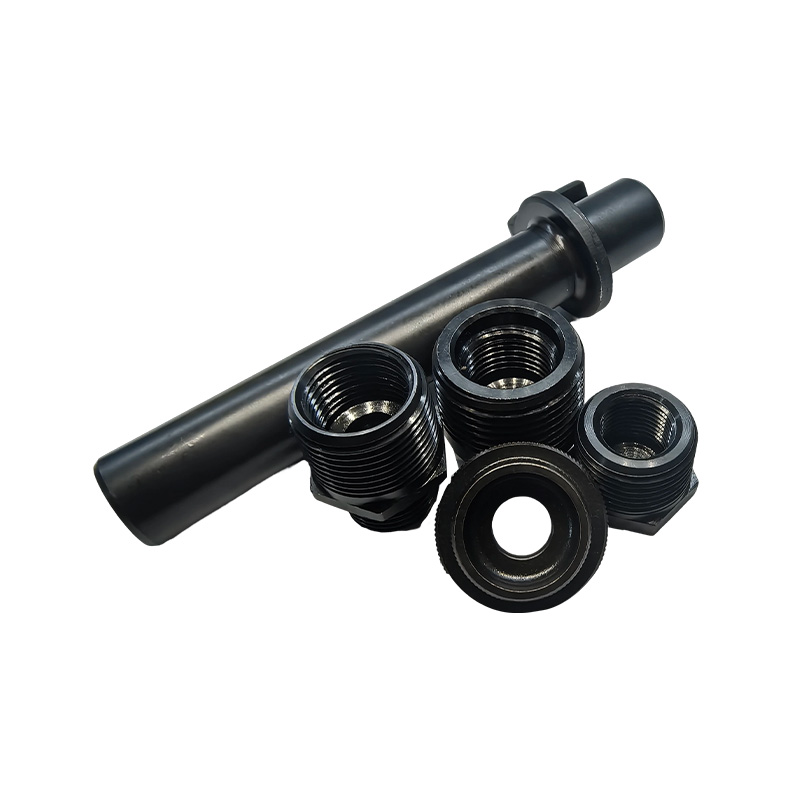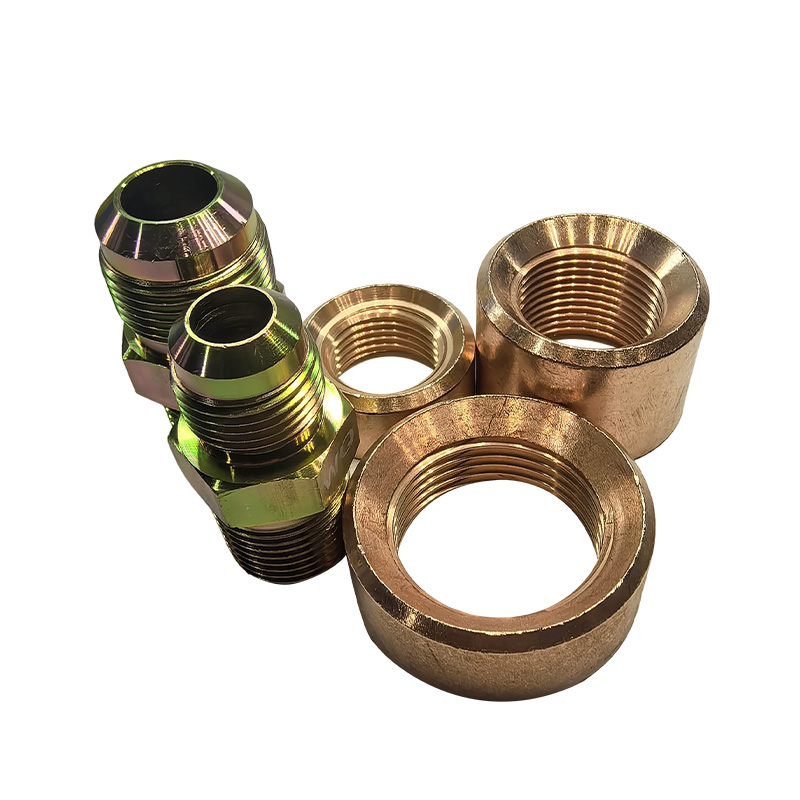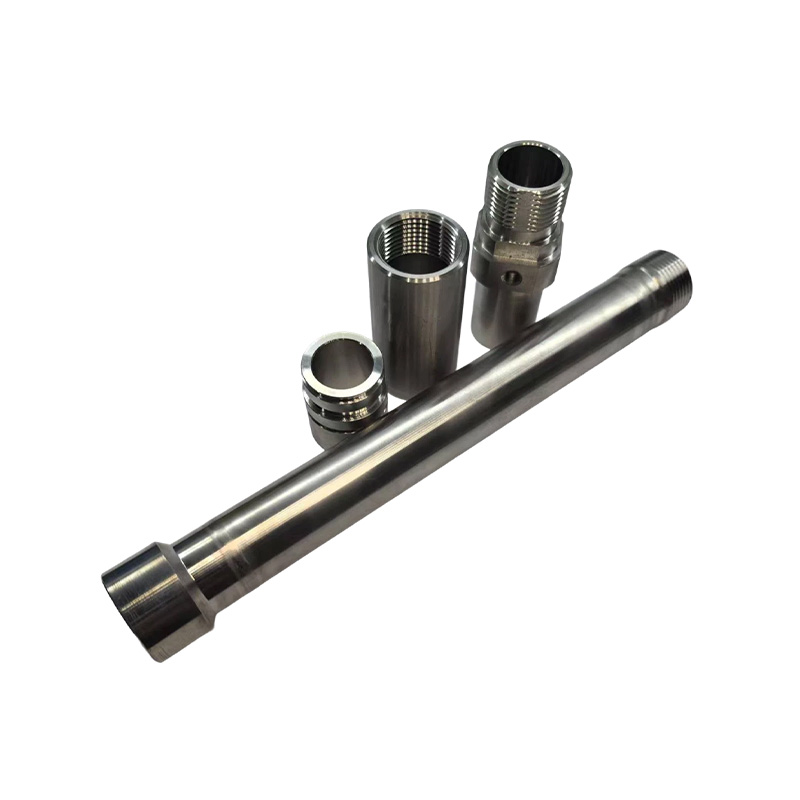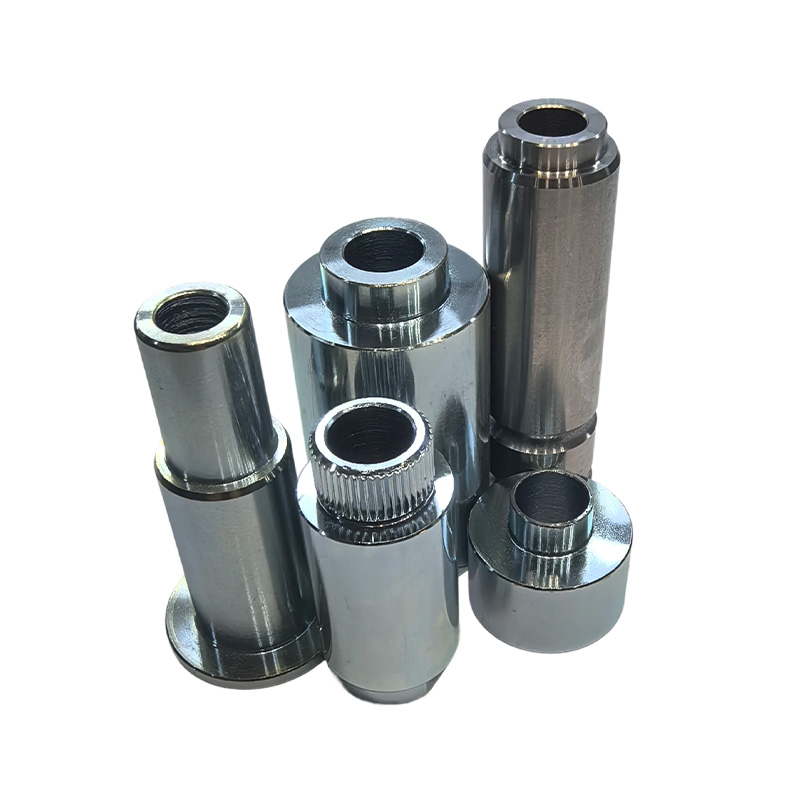How can we prevent gas leaks caused by rubber aging during long-term use of gas appliance connectors?
Release Time : 2025-08-27
Gas appliance connectors are key components that connect gas pipes to appliances like stoves and water heaters. Their safety is directly related to the safety of life and property in the home. Among the many types of connectors, traditional rubber hoses were once widely used. However, their primary material, rubber, is prone to aging, cracking, swelling, and rodent gnaws over time, leading to gas leaks and becoming a major hidden danger in household gas accidents.
1. Causes and Risks of Rubber Aging
Long-term exposure to gas (especially components in liquefied petroleum gas), high temperatures, oily contaminants, and ultraviolet radiation can cause changes in the physical and chemical properties of rubber. These changes manifest as decreased elasticity, hardening, brittleness, surface cracking, and even localized swelling and softening. This aging process weakens the hose's pressure-bearing capacity and sealing properties. Once tiny cracks develop or the connector becomes loose, gas will slowly leak. Because natural gas or liquefied gas is colorless and odorless (if odorizers are added), leaks are difficult to detect in the early stages. However, exposure to open flames or sparks can easily cause fires or explosions, with devastating consequences.
2. Preferred Alternative: Promote the Use of Stainless Steel Bellows
To fundamentally address the issue of rubber aging, stainless steel bellows are currently widely recommended as the preferred connector for gas appliance connections, both domestically and internationally. Compared to rubber hoses, stainless steel bellows offer significant advantages:
Aging Resistance: Made of 304 or 316 stainless steel, they are corrosion-resistant, heat-resistant, and oil-resistant, with a service life of over eight years, far exceeding the 18 months to two years of rubber hoses.
Rodent Resistant: The sturdy metal structure effectively resists gnawing by rats and other rodents, preventing leaks caused by animal damage.
Strong Tension, Compression, and Bending Resistance: The corrugated structure provides excellent flexibility, allowing for adaptability to various installation angles. It also offers strong tensile and compressive resistance, making it less susceptible to dislodging due to stove movement.
Strong Airtightness: Combined with specialized sealing rings and threaded connectors, they provide a tighter connection, eliminating the risk of leakage.
3. Proper Installation and Regular Inspection
Even when replacing with safer metal bellows, proper installation and regular inspections are still essential. During installation, ensure that the joints, gas valves, and stove air inlet are securely tightened to prevent overtightening that could damage the threads, or overtightening that could cause leaks. It is recommended that installation be performed by a professional, and an airtightness test be performed with soapy water to confirm that no bubbles are generated. Households still using rubber hoses must conduct regular inspections. It is recommended that hoses be inspected every six months to check for cracks, hardening, oil penetration, or flattening. Hoses should not exceed 2 meters in length and must not be passed through walls, cabinets, or near heat sources. They must be replaced promptly within their service life.
4. Installing Safety Devices
To further enhance safety, gas pipelines can be equipped with self-closing valves and gas leak alarms. Self-closing valves automatically shut off the gas supply if pipeline pressure is abnormal (e.g., a hose detaches or ruptures). Gas alarms monitor the gas concentration in the air in real time and, if it exceeds the specified limit, immediately sound an audible and visual alarm, alerting users to take prompt action.
5. Policy Guidance and User Education
In recent years, gas companies in many regions have implemented a "trade-in" program, replacing stainless steel corrugated hoses for free or at a low cost, mitigating the risk of accidents at the source. At the same time, strengthening public safety education, promoting knowledge about the proper use and maintenance of gas appliance connectors, and raising user safety awareness are also crucial steps in preventing leaks caused by rubber aging.
The most effective measure to prevent leaks in gas appliance connectors due to rubber aging is to phase out traditional rubber hoses and fully promote the use of stainless steel bellows. This is supplemented by standardized installation, regular inspections, and intelligent security equipment to establish a multi-layered safety protection system.
1. Causes and Risks of Rubber Aging
Long-term exposure to gas (especially components in liquefied petroleum gas), high temperatures, oily contaminants, and ultraviolet radiation can cause changes in the physical and chemical properties of rubber. These changes manifest as decreased elasticity, hardening, brittleness, surface cracking, and even localized swelling and softening. This aging process weakens the hose's pressure-bearing capacity and sealing properties. Once tiny cracks develop or the connector becomes loose, gas will slowly leak. Because natural gas or liquefied gas is colorless and odorless (if odorizers are added), leaks are difficult to detect in the early stages. However, exposure to open flames or sparks can easily cause fires or explosions, with devastating consequences.
2. Preferred Alternative: Promote the Use of Stainless Steel Bellows
To fundamentally address the issue of rubber aging, stainless steel bellows are currently widely recommended as the preferred connector for gas appliance connections, both domestically and internationally. Compared to rubber hoses, stainless steel bellows offer significant advantages:
Aging Resistance: Made of 304 or 316 stainless steel, they are corrosion-resistant, heat-resistant, and oil-resistant, with a service life of over eight years, far exceeding the 18 months to two years of rubber hoses.
Rodent Resistant: The sturdy metal structure effectively resists gnawing by rats and other rodents, preventing leaks caused by animal damage.
Strong Tension, Compression, and Bending Resistance: The corrugated structure provides excellent flexibility, allowing for adaptability to various installation angles. It also offers strong tensile and compressive resistance, making it less susceptible to dislodging due to stove movement.
Strong Airtightness: Combined with specialized sealing rings and threaded connectors, they provide a tighter connection, eliminating the risk of leakage.
3. Proper Installation and Regular Inspection
Even when replacing with safer metal bellows, proper installation and regular inspections are still essential. During installation, ensure that the joints, gas valves, and stove air inlet are securely tightened to prevent overtightening that could damage the threads, or overtightening that could cause leaks. It is recommended that installation be performed by a professional, and an airtightness test be performed with soapy water to confirm that no bubbles are generated. Households still using rubber hoses must conduct regular inspections. It is recommended that hoses be inspected every six months to check for cracks, hardening, oil penetration, or flattening. Hoses should not exceed 2 meters in length and must not be passed through walls, cabinets, or near heat sources. They must be replaced promptly within their service life.
4. Installing Safety Devices
To further enhance safety, gas pipelines can be equipped with self-closing valves and gas leak alarms. Self-closing valves automatically shut off the gas supply if pipeline pressure is abnormal (e.g., a hose detaches or ruptures). Gas alarms monitor the gas concentration in the air in real time and, if it exceeds the specified limit, immediately sound an audible and visual alarm, alerting users to take prompt action.
5. Policy Guidance and User Education
In recent years, gas companies in many regions have implemented a "trade-in" program, replacing stainless steel corrugated hoses for free or at a low cost, mitigating the risk of accidents at the source. At the same time, strengthening public safety education, promoting knowledge about the proper use and maintenance of gas appliance connectors, and raising user safety awareness are also crucial steps in preventing leaks caused by rubber aging.
The most effective measure to prevent leaks in gas appliance connectors due to rubber aging is to phase out traditional rubber hoses and fully promote the use of stainless steel bellows. This is supplemented by standardized installation, regular inspections, and intelligent security equipment to establish a multi-layered safety protection system.







